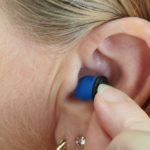Can smokeless tobacco cause cancer?
Smokeless tobacco is chewable tobacco and is not burned. It is also known as oral tobacco, spit tobacco, chew, dip and snuff. It is kept in the mouth, between the cheek and lower gums, and its extract releases nicotine. Nicotine is directly absorbed from the lining of the mouth. The tobacco juice that collects in the mouth spits out. People in many countries use smokeless tobacco including North America, Europe, Africa, India, and other Asian countries.
Types of smokeless tobacco
Smokeless tobacco is available in two forms. One is chewing tobacco found as leaves. It is either chewed or held in the mouth. The other type is snuff, which is powdered tobacco. It is available in pouches, chewable lozenges, or strips. This is also kept in the mouth. Some people inhale dry snuff.
Harmful chemicals in smokeless tobacco
Tobacco contains more than 25 harmful chemicals which are carcinogenic. The most important chemical is nitrosamine. Others include polonium and polycyclic hydrocarbons. Scientific studies have shown that the level of these chemicals in tobacco is directly related to the risk of cancer. It contains nicotine also, which has a harmful effect on the heart and blood vessels.
Areas affected by cancer
Smokeless tobacco causes oral cancer, esophageal cancer, and pancreatic cancer. In many patients, a white patch appears in the oral cavity called leukoplakia. It may turn red and aggressive and is called erythroplakia. Both are precancerous lesions. In people who also consume alcohol along with the use of tobacco, the risk of oral cancer is multiplied.
Smoking versus smokeless tobacco
Both are dangerous for health and should be avoided. As smoking affects other people due to passive smoking which is not the case with smokeless tobacco, the former is more hazardous. Hence, in many countries, smoking is banned in public or enclosed places. This does not mean that smokeless tobacco as a substitute for smoking as it causes addiction and cancer.
Smokeless tobacco addiction
All tobacco products, including smokeless tobacco, contain nicotine, which is responsible for addiction. In users of smokeless tobacco, nicotine is absorbed directly into the blood from the mouth and reaches the brain. As a result of this, higher levels of nicotine are maintained in circulation in comparison to smokers.
Effects of nicotine
Nicotine is absorbed from mucous membranes in the oral cavity. It is also absorbed in the intestine. Nicotine increases heart rate and blood pressure. It causes addiction due to its effects on the brain.
Treatment of nicotine addiction
Due to the addictive effects of nicotine, people become incapacitated and cannot leave the use of tobacco. Steps should be taken to treat this addiction and prevent cancer and cardiovascular diseases due to tobacco abuse. These treatment modalities include:
- Counseling and behavioral therapy: It brings a change in behavior that motivates a smoker to set an example for others to follow.
- Replacement therapy: A progressively reduced amount of nicotine is given to the patient. This prevents withdrawal symptoms. It helps the patient to fight against nicotine cravings. The aim of this therapy is to achieve complete abstinence from tobacco chewing. Nicotine can be administered orally in a form of a gum, skin patch, nasal spray, and inhaler.
- Medications: A few drugs are used to prevent relapse in people who quit smoking. These include Bupropion, Rimonabant, Varenicline, and Clonidine. These drugs can help nicotine addicts achieve smoking cessation by reducing cravings and withdrawal symptoms. Scientific studies support its use as an effective therapy for people willing to quit smoking.
A range of treatment modalities is available to stop the abuse of smokeless tobacco. A combination of behavioral treatment, nicotine replacement, and an anti-craving medication to prevent relapse is currently considered the treatment of choice. To decrease the overall burden of tobacco-associated diseases, physicians provide health education and treatment.




























